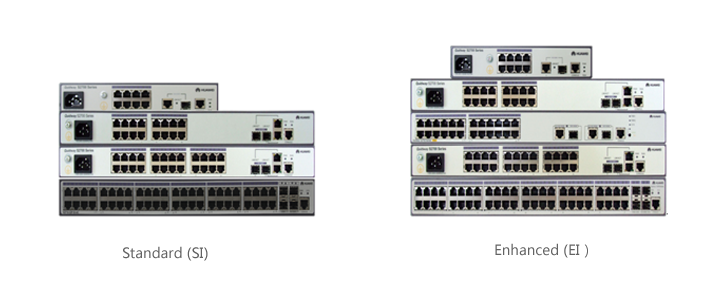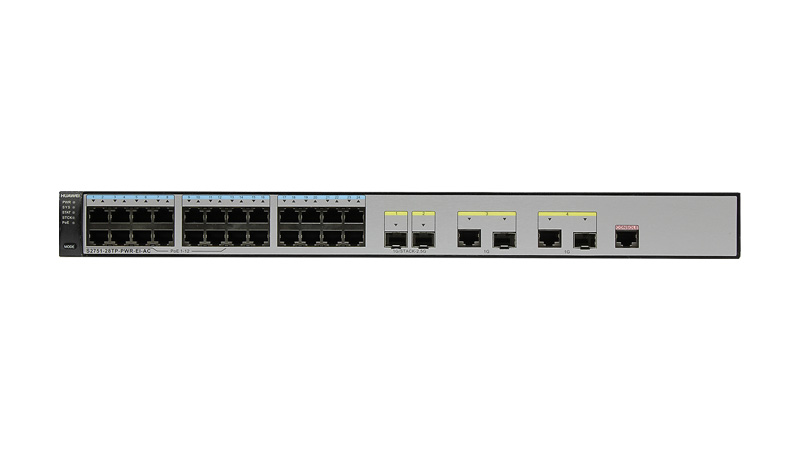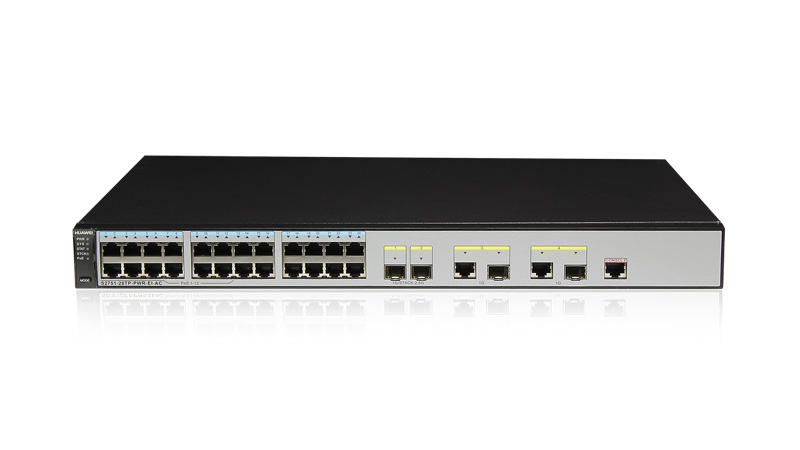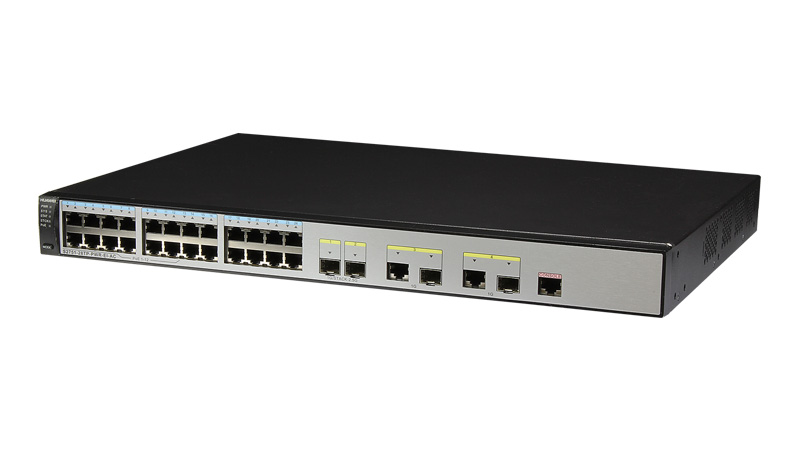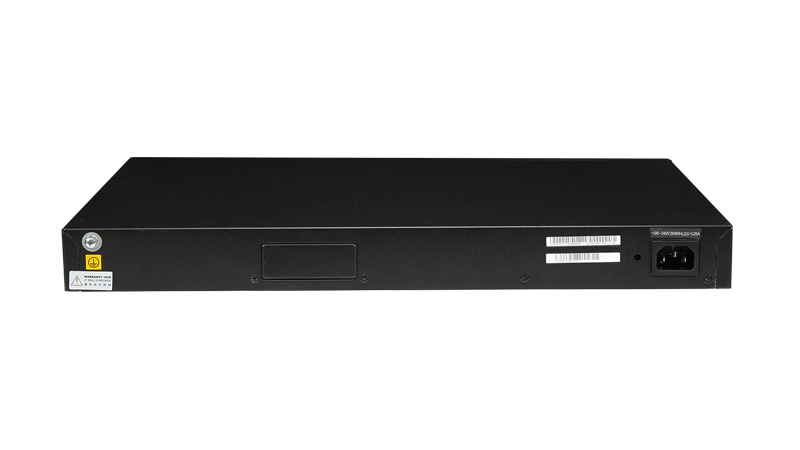Maintenance free, easy deployment, and easy management
The S2700 supports automatic configuration and plug-and-play, which dramatically reduces maintenance costs.
The S2700 supports GARP VLAN Registration Protocol (GVRP), which dynamically distributes, registers, and propagates VLAN attributes to ensure correct VLAN configuration and reduce network administrator workloads.
Flexible service control
The S2700-EI supports various ACLs. ACL rules can be applied to VLANs to flexibly control ports and schedule VLAN resources.
Excellent security features
The S2700 supports DHCP snooping, which generates user binding entries based on users' access interfaces, MAC addresses, IP addresses, IP address leases, VLAN IDs.
The S2700 can limit the number of MAC addresses that can be learned on an interface to prevent attackers from exhausting MAC address entries by using bogus source MAC addresses.
The S2700 supports centralized MAC address authentication, 802.1x authentication, and NAC.
PoE function
The S2700 PWR can use Power over Ethernet (PoE) power supplies with different power levels to provide -48 V DC power for powered devices (PDs) such as IP Phones, WLAN APs, and Bluetooth APs.
Comprehensive QoS policies
The S2700 supports complex traffic classification based on packets' port numbers, VLAN IDs, source MAC/IP addresses, destination MAC/IP addresses, IP protocols, or priorities.
Powerful surge protection capability
The S2700 uses a Huawei-patented surge protection technique to prevent lightning-induced overvoltage. All ports on the S2700 have 6 kV of surge protection, making them eight times more lightning-proof than 4 kV switches. The Huawei patented surge protection technique greatly reduces the possibility of equipment being damaged by lightning, even in extreme situations or in scenarios where grounding is not feasible.
Quiet operation, energy conservation, and low radiation
The S2700 uses an energy-saving integrated circuit design to ensure even heat dissipation. Idle ports can enter a sleep mode to further reduce power consumption. The S2700 generates no sound because it does not contain any fans. Radiation produced by the S2700 is within the standard range for electric appliances and causes no harm to the human body.
100 Mbit/s Access Rate for Terminals
The S2700 can function as a desktop access device that provides 100 Mbit/s access rate for terminals and 1000 Mbit/s uplink interfaces to communicate with uplink devices.



